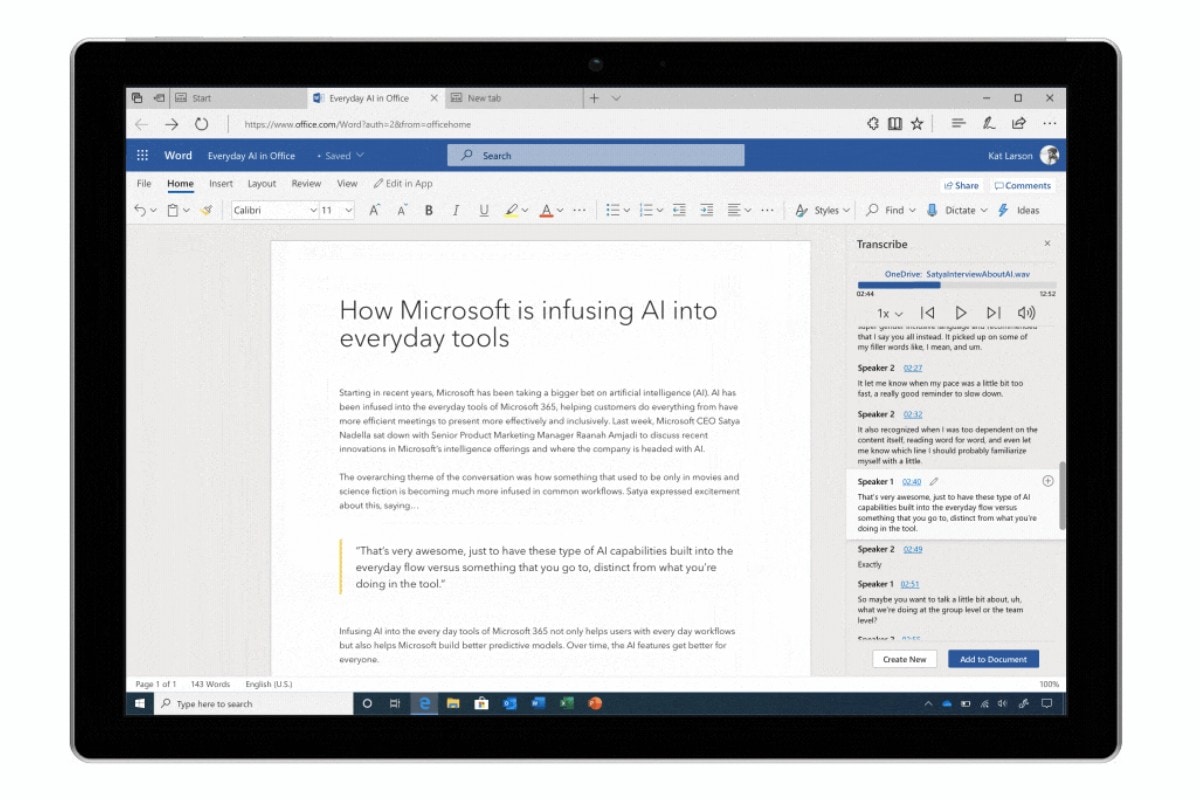
This file can then be used anywhere a normal wav file could. This will write the audio data to a file named output.wav in the application’s runtime directory, creating that file if it needs to. Using (SpeechSynthesizer synthesizer = new(speechConfig))įile.WriteAllBytes( "output.wav", result.AudioData) We can write out the audio file to disk in a number of different ways, but perhaps none more simple than a File.WriteAllBytes call as listed below: wav file could then be played any number of times in the future without needing to regenerate it from the cognitive services speech API. If your application frequently needs to generate speech from the same strings every time, it’s likely more cost effective to use Azure Cognitive Services once to generate an audio file and then save that audio file into a. Speech resulted in status: SynthesizingAudioCompletedįor very simple usages of SpeakTextAsync, this is all you need as simply calling the method will result in audio reaching the speakers.
AZURE SPEECH TO TEXT PRICE CODE
The code above prints out the Reason or status of the result, which displays the following:
AZURE SPEECH TO TEXT PRICE FULL
This is important because the SpeechSynthesisResult instance has the full audio data associated with it, which could have a very large memory footprint for long audio samples, so it’s important to dispose this result once it is no longer needed. Note here that we have one using statement nested inside of the other one. Using (SpeechSynthesisResult result = await synthesizer.SpeakTextAsync(message))Ĭonsole.WriteLine( $"Speech resulted in status: ") Using (SpeechSynthesizer synthesizer = new SpeechSynthesizer(speechConfig)) Once we have our voice picked, you can set it into the SpeechConfig’s SpeechSynthesisVoiceName property as follows: In our sample here, I’ll go with en-US-GuyNeural simply because I used it recently on another projects. It’s normal to try several different voices and phrases for each voice until you find one you like for your application. There are a wide variety of voices, but the voices ending with Neural use neural networks to make the generated speech sound more natural and human-like. Since I’m located in the United States and speak English, I go to Microsoft’s speech service language support page and look at the en-US voices. Now that we have the SpeechConfig instance, we need to tell it which of these voices it should use for our application. These voices represent different genders, languages, and regions throughout the world and can give your applications a surprisingly human touch.

Choosing a VoiceĪzure Cognitive Services offers a wide variety of voices to use in speech. Because of this, do not check your key into source control, but rather store it in a configuration file that can be securely stored. Security Note: your subscription key is a sensitive piece of information because anyone can use that key to make requests to Azure at a pay-per-use cost model and you get the bill for their requests if you’re not careful. SpeechConfig speechConfig = SpeechConfig.FromSubscription(subscriptionKey, region) String region = "northcentralus" // use your region instead String subscriptionKey = "YourSubscriptionKey" These values should come from a config file Microsoft gives us two keys so you can swap an application between keys and then regenerate the old key to keep these credentials more secure over time.īefore you can reference these APIs in C# code, you’ll need to add a reference to using NuGet package manager or via the. It does not matter which of the two keys you use. Keys can be found on the keys and endpoints blade of your resource in the Azure portal:

See my article on cognitive services for more information on when to use a computer vision resource instead of a cognitive services resource Both will have the same information available on their Keys and Endpoints blade. Note: you can either use a cognitive services resource or a speech resource for these tasks. In order to work with text to speech, you must have first created either an Azure Cognitive Services resource or a Speech resource on Azure and have access to one of its keys and the name of the region that resource was deployed to. In this article we’ll see how text to speech is easy and affordable in Azure Cognitive Services with only a few lines of C# code.

Specifically, text to speech takes a string of text and converts it to an audio waveform that can then be played or saved to disk for later playback. Text to speech, or speech synthesis, lets a computer “speak” to the user using its speakers.


 0 kommentar(er)
0 kommentar(er)
